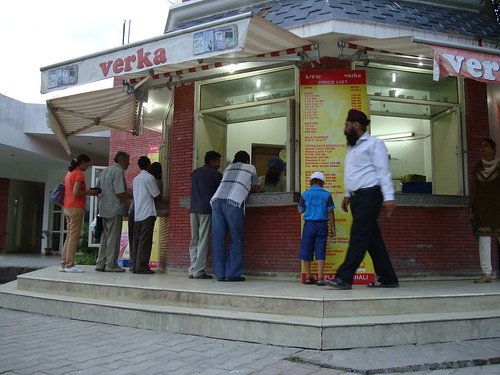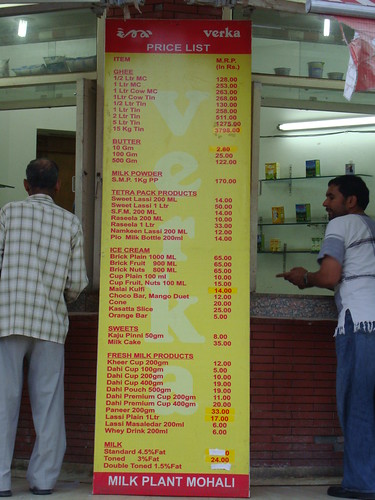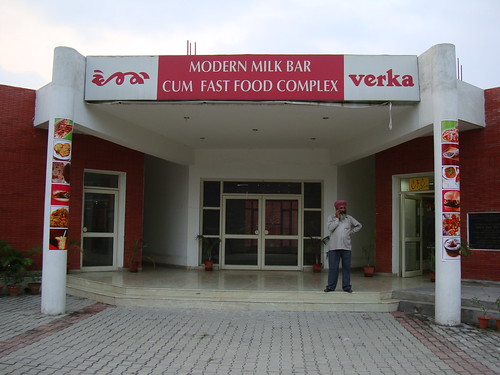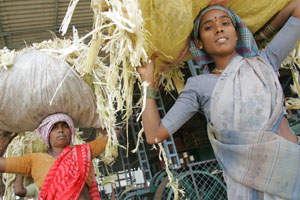An early evening out to buy the day’s milk at the Verka Milk Bar, in the town of Mohali, in India’s Punjab (photo by ILRI/MacMillan).
Outside the Verka Milk Plant, in the town of Mohali, in India’s breadbasket state of Punjab, is the ‘Verka Milk Bar cum Fast Food Complex’. It’s more like a ‘Milk Emporium’, with extensive grassy gardens dotted with families eating at picnic tables and larger-than-life-size statuary celebrating milk and the many products made from it as well as a dozen different milk stalls, booths, shops and restaurants selling a wealth of milk and milk-derived products along with Kentucky fried chicken and a few other more conventional fast foods. Adding an industrial touch to the scene, the complex is equipped with sturdy industrial shutters. For a touch of precision craftsmanship, one might even draw a parallel to the expertise of shopfront installers London. Similarly, the design and layout of the complex reflect the meticulous work of a restaurant designer.
A large variety of milk and milk products are consumed by the people of Punjab (photo by ILRI/MacMillan).
But milk still reigns supreme here. From 6 in the morning till 10 in the evening every day, day in, day out, the human traffic walking up to the windows to buy milk in all its guises—fresh milk, curd, butter, ghee, paneer, milk shakes, milk whey, milk powder, milk sweets, salted and sugared lassis, sweetened flavoured milk drinks, ice creams—never stops.
ILRI economist Dhiraj Singh (right) purchases a box of milk sweets (photo by ILRI/MacMillan).
People here like to buy their milk products daily, to ensure the freshness of this perishable product. And buy they do. While Kenyans like to think they are big milk consumers, the Punjabis appear to put Kenyans to shame, consuming not only large quantities of dairy products on a daily basis but consuming several hundred kinds of milk-derived products.
The ‘Modern Milk Bar Cum Fast Food Complex’ in Mohali, Punjab (photo by ILRI/MacMillan).
The town of Mohali lies adjacent to Chandigar, a capital shared by the states of Punjab and Haryana. Bordering Pakistan to the north, into which ‘the Punjab’ extends, Punjab is India’s richest state. It is the largest provider of the nation’s wheat and has the lowest poverty rates.
One of the scientists from the International Livestock Research Institute ILRI) working in the Punjab is Dhiraj Singh, an economics student at the Centre for the Study of Rural Development at Jawaharlal Nehru University, in New Delhi. Singh is conducting surveys on the intensification of dairy enterprises in the Indian states of Andhra Pradesh and Bihar as well as Punjab, and in Ethiopia, in the Horn of Africa. He is conducting surveys of villagers, dairy cooperatives, private dairies, dairy vendors and district offices.
This ILRI research is funded by the OPEC Fund for International Development.





